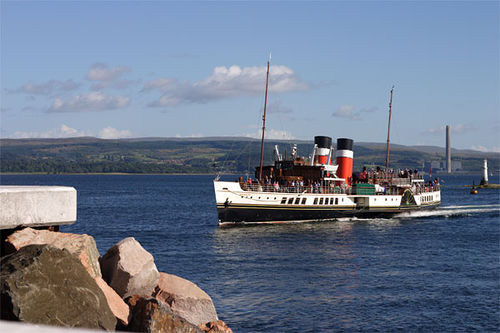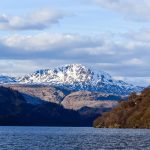Dunoon
Situated in the western shore of the Firth of Clyde, Dunoon is one of the few places in mainland Scotland that is more accessible by sea than it is by land, so much so that is has the feel of an island even though it is isn’t. The town of Dunoon is built around two large bays, namely the East and West Bays and is the largest town in the Argyll area. Between the two bats there is an outcrop of land that juts out into the estuary and this is the site where Dunoon castle once stood. This was at one time a major stronghold built originally around 1050. The castle was finally abandoned in 1650 and all that remains of the castle today are a few grassed over mounds on the top of a hill on which you can take in some incredible views of the Clyde. Although the castle is no longer in existence, just to the north of the castle site is Castle House, built in part from the stones from the ruins of the castle in 1822. Today Castle House is a museum which stands in the grounds of a popular public park.

An Escape For The Wealthy
Dunoon became the place for the wealthy of Glasgow to move out to, to have their spacious riverside villas away from the crowding of the city. For those that couldn’t afford to move out of the city Dunoon became the placer to go for holidays. By 1820 there was a pier and a regular ferry service across the Clyde to the bustling city of Glasgow, as the railways grew so did the public’s access to the peaceful seaside of Dunoon.
The town is very much a product of its history. Whilst the castle may no longer be standing as a symbol of its former glory, the grand villas that were built along the shoreline of the Clyde are very much still in existence, as are the hotels that were built to accommodate the people that came to escape the city for a while, which are still doing the same job that they always did as people return here to escape the trials of daily life for a while.
Rising From the Ashes
During the declining years of the Clyde Dunoon managed to avoid the worst of the economic recession due to the building of a US submarine base just to the north of the town in Holy Loch. The result of this was that by 1990 almost 25% of the people living in Dunoon were of American descent. When the base closed down in 1992 the town suffered a serious blow to its local economy. Yet it never stayed down for long, and began promoting itself as the perfect seaside destination for those looking for the perfect UK holiday. Just seven miles to the north west of the town is one of the region’s biggest visitor attractions, this being the Benmore Botanic Gardens which offer an oasis of colour and life in this rural and coastal setting.


